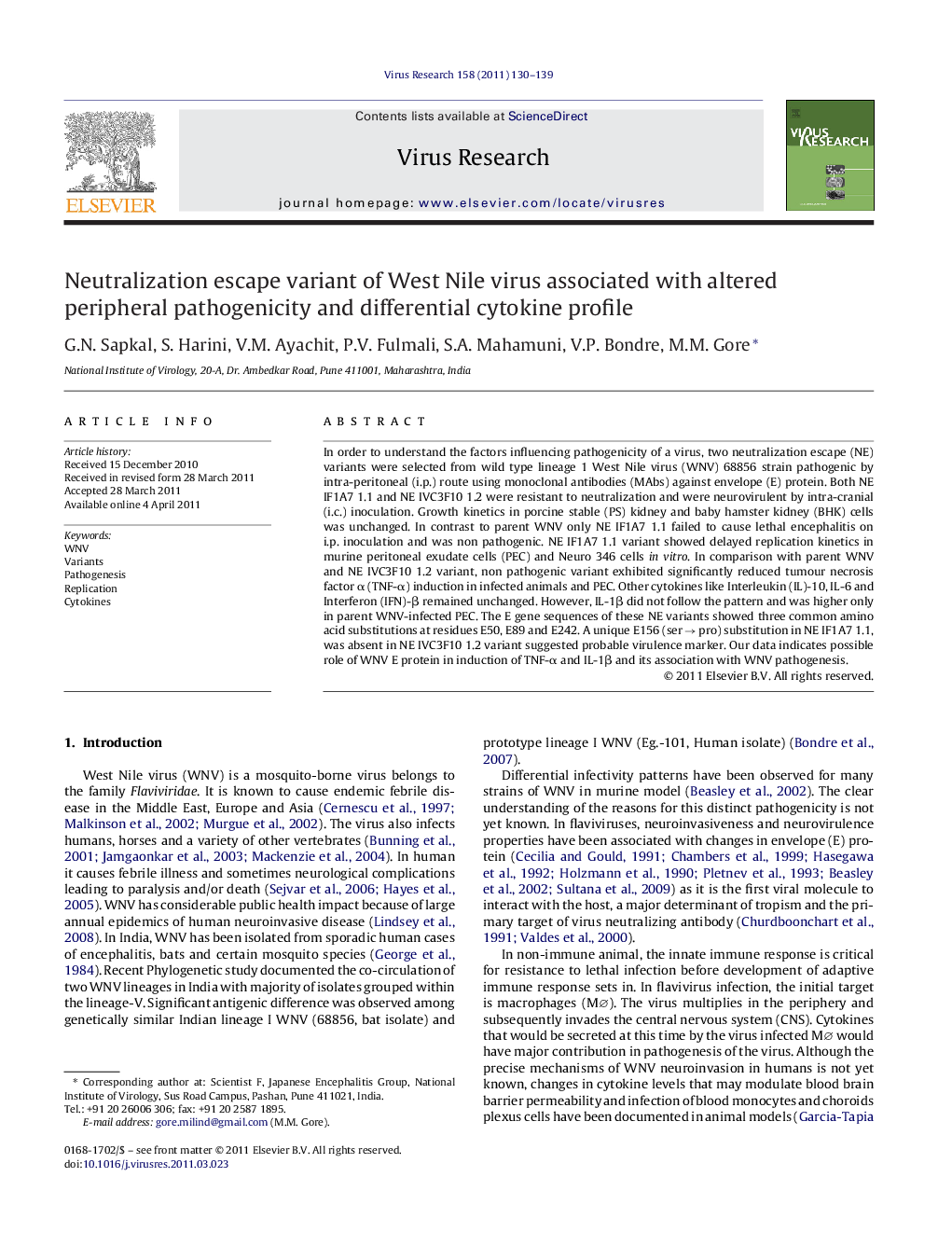| Article ID | Journal | Published Year | Pages | File Type |
|---|---|---|---|---|
| 3428999 | Virus Research | 2011 | 10 Pages |
In order to understand the factors influencing pathogenicity of a virus, two neutralization escape (NE) variants were selected from wild type lineage 1 West Nile virus (WNV) 68856 strain pathogenic by intra-peritoneal (i.p.) route using monoclonal antibodies (MAbs) against envelope (E) protein. Both NE IF1A7 1.1 and NE IVC3F10 1.2 were resistant to neutralization and were neurovirulent by intra-cranial (i.c.) inoculation. Growth kinetics in porcine stable (PS) kidney and baby hamster kidney (BHK) cells was unchanged. In contrast to parent WNV only NE IF1A7 1.1 failed to cause lethal encephalitis on i.p. inoculation and was non pathogenic. NE IF1A7 1.1 variant showed delayed replication kinetics in murine peritoneal exudate cells (PEC) and Neuro 346 cells in vitro. In comparison with parent WNV and NE IVC3F10 1.2 variant, non pathogenic variant exhibited significantly reduced tumour necrosis factor α (TNF-α) induction in infected animals and PEC. Other cytokines like Interleukin (IL)-10, IL-6 and Interferon (IFN)-β remained unchanged. However, IL-1β did not follow the pattern and was higher only in parent WNV-infected PEC. The E gene sequences of these NE variants showed three common amino acid substitutions at residues E50, E89 and E242. A unique E156 (ser → pro) substitution in NE IF1A7 1.1, was absent in NE IVC3F10 1.2 variant suggested probable virulence marker. Our data indicates possible role of WNV E protein in induction of TNF-α and IL-1β and its association with WNV pathogenesis.
